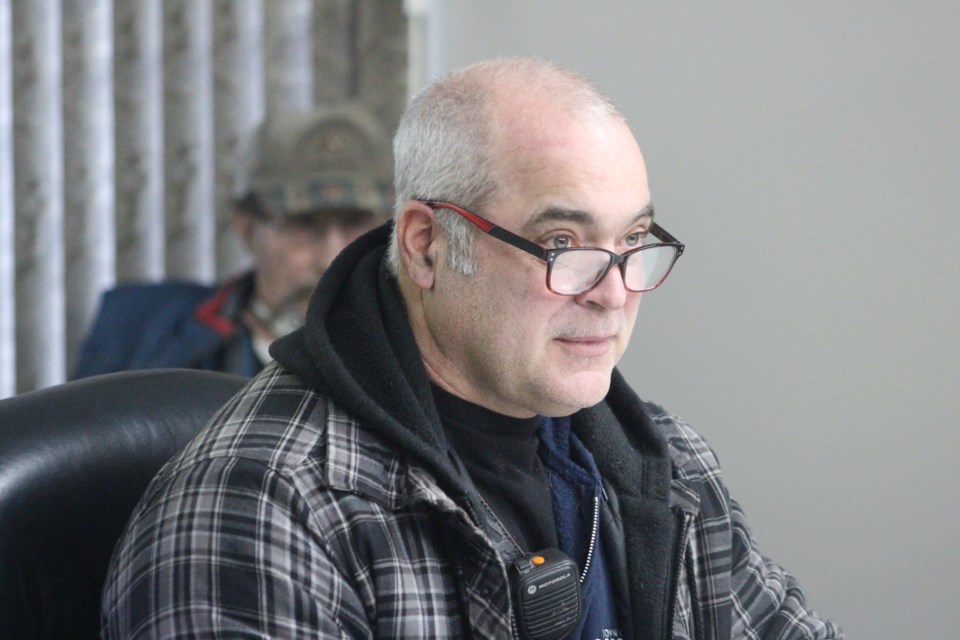BARRHEAD - The Barrhead Regional Fire Services (BRFS) smashed a record in 2023 that they had hoped would stand for a long time, if not forever.
BRFS chief Gary Hove told County of Barrhead councillors during his March 5 quarterly report that firefighters responded to 483 calls.
The previous record, he said, was 327.
Hove said the record number of responses last year could be attributed to increased medical or ambulance assist calls and wildfire responses.
In 2023, BRFS firefighters responded to 220 medical response calls, 174 of which were in the Town of Barrhead. Of these, 46 were in the County of Barrhead.
"We are getting busier with that," he said, adding the BRFS are not the only ones.
Hove added that he has talked with several fire chiefs, who said they are seeing a similar trend.
He added that he isn't sure why the number of ambulance assistance calls is rising, but Hove said he knows Alberta Health Services (AHS) has had issues adequately staffing its ambulance units, including those stationed in Barrhead.
"Sometimes it is because [one of Barrhead's ambulances] is because the local service has been downgraded while one of our ambulances is covering or responding in other communities," Hove said, adding he has called AHS telling them that he was concerned about ambulance coverage in the community.
He added that he was especially concerned about the lack of an advanced care paramedic in Barrhead. Fortunately, Hove said that had recently changed.
The next highest category was alarm investigations, with 117. Most calls were from the town, with 71 and 46 within county borders.
Although the wildfire season was the worst in recent memory, it ranked third in responses at 44 and first in total firefighter hours at 179.
"Hopefully, we will receive more rain in the spring, so we won't have to deal with so many wildfires," he said.
In its continued effort to prepare for the wildfire season, he said the province had contacted the BRFS and other rural fire departments about the potential use of department personnel and equipment for provincial wildfire fighting task forces.
Last year, the BRFS contributed to several such task forces, including those for firefighting efforts in Yellowknife, Hay River, Anne Lessard Lake Estate, the Drayton Valley, Rainbow Lake, and Peavine Métis Settlement. BRFS firefighters and equipment were also assigned to a multi-department strike force out of Peace River. In June 2019, the province also deployed BRFS firefighters and equipment to help battle the Chuckegg Creek Fire near High Level.
Hove added that because of BRFS deputy chief Ted Amos's experience in these types of deployments (Amos volunteered for all the above deployments), the province has asked him to consider being a task force leader.
"Only if the opportunity is there and if he is available. If he is needed here, he will stay here," he said.
Coun. Bill Lane asked if Hove had much contact with the senior residences, such as Hillcrest Lodge, on the importance of participating in fire drills.
"They [the residents] don't want to go outside," he said.
Hillcrest Lodge is one of the senior residences operated by the not-for-profit Barrhead and District Social Housing Association (BDSHA). Lane is the county's representative on its board.
Hove noted he has also received similar calls from residents' family members and has contacted the BDSHA administration.
"[BDSHA administration] are doing training with their staff to ensure they make sure what [fire drill, evacuation] procedure is and are instituting training with the residents," he said.
Hove added that depending on the time of a drill or event, if BDSHA staffing is low, he told them. Firefighters can help by doing sweeps of buildings.
"Or they could just evacuate to the foyer, where if it was a real emergency, we could get them out quickly," he said.
Training and membership
Hove said the department has hosted several training courses for its members over the last year, including the National Fire Protection Association (NFPA) 1001 course, a nationally recognized course is the one that firefighters need to complete to be considered professional firefighters, courses on wildland and urban interface wildland fire courses and are necessary if BRFS firefighters want to respond to provincial wildfire callouts, and a hazardous materials course.
Hove added that the department has 48 members, including four in its new junior program for those under 18.
He said junior firefighters have several limitations placed on them, such as they can't act on a fire or do fire control.
"Mostly, they work in the background getting tools and stuff like that," he said.
Hove added that junior fire recruits are also not allowed to respond during school or any call past 10 p.m.
"And if they have a test the next day, we tell them to stay home and study," he said.
Barry Kerton, TownandCountryToday.com


